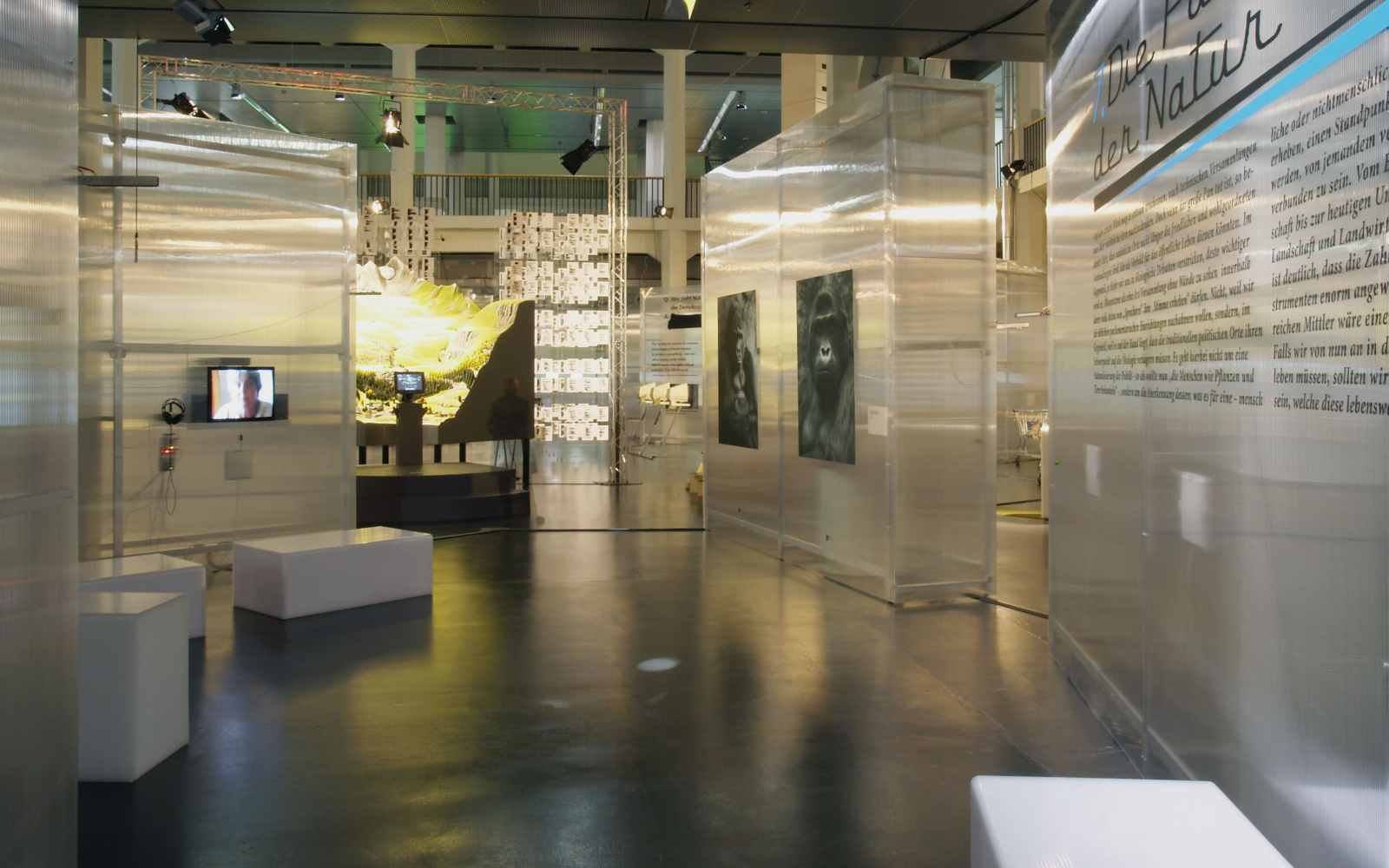- Exhibition
Making Things Public
Atmospheres of Democracy
Sun, March 20 – Mon, October 03, 2005
The exhibition »Making Things Public« addresses the challenge of renewing politics by applying to it the spirit of art and science. This unusual exhibition builds on the »Iconoclash« exhibition (ZKM 2002), which dealt with the crisis of representation in art, whereas »Making Things Public« tackles the problem of representation in politics.
In this pioneering project over one hundred artists, scientists, sociologists, philosophers and historians re-explore the term »politics«. At a time in which many people doubt and despair of politics it is crucial that they should not be fobbed off with standard political responses to contemporary problems but that the question of what actually constitutes politics should be raised anew.
It is perhaps worth pointing out that one of the most influential works on the philosophy of the politics, »Leviathan« (1651) by Thomas Hobbes, does not begin as a political treatise but with an outline of aesthetics: “Nature (the art whereby God hath made and governs the world) is by the art of man, as in many other things, so in this also imitated, that it can make an artificial animal.” Hobbes brings together the three forms of representation that are normally kept apart, i.e. science, representing nature and things; politics, representing people; and art, representing the coming together of people and things. This is precisely the approach we have adopted, too.
We have become accustomed to a concept of democracy in which the sole focus is on a kind of representation, i.e. the representation of the people or of the interests of people whose conflicts are resolved in parliament. So when we think of democracy we think automatically of a representative democracy. The new concept of the political presented here does not turn a blind eye to the representational strategies of art and science. On the contrary, it extends the previous techniques of political representation by adding art and science to them. Instead of searching for more democracy only in the realm of professional politics, we draw attention to the new atmospheric conditions of democracy, to a complex set of technologies, interfaces, platforms, networks and media that allow things to become public.
In other words, we go back to the things of nature, of people and of art that constitute the political and ask what these things actually are. We ask how things come about and are made public. What are public things, res publicae? A republic?
The exhibition is divided into 13 thematic areas. It begins with a section entitled »No Politics Please« and then moves on to examine the forms of assembly to be found in other cultures. The issue of collection, of bringing together, is crucial to »The Puzzle of Composite Bodies« and »The Good and the Bad Government«. In »Assembly of Assemblies« visitors can see that there are many other types of gatherings which are not political in the traditional sense but in which a public is formed around things such as science labs, technical projects, supermarkets, financial arenas and churches - »The Market Place is a Parliament«, Too. The same applies to disputed issues concerning natural resources such as rivers, landscapes, animals, temperature and air - »The Parliaments of Nature«. All these phenomena have led to a bewildering set of techniques of representation that have created the real political landscape in which we live, breathe and argue. They may be assemblages, but can they be turned into real assemblies?
The next section shows that Parliaments, Too, are Complex Technologies. Instead of saying that voting, talking, arguing and deciding are quaint pieces of machinery, the visitor begins to consider them with great respect because of their delicate set of fragile mediations. Instead of looking for democracy only in the official »sphere« of professional politics, this section draws attention to the new conditions enabling things to be made public (No Mediation, No Representation). The next logical step is to imagine what representative assemblies could become if only they could benefit from all the techniques of mediation considered earlier. So visitors enter the last part of the exhibition, where they can imagine the future of politics by developing New Politic Passions.
Having left the exhibition, it will have become clear to visitors that the repertoire of attitudes and passions that are usually associated with taking a political stand is much too narrow. There are many other ways of reacting politically in other non-Western traditions, in the old political philosophies, in most contemporary science and technology, in the new web-based spaces and in the instruments of representation, of which parliaments are only a part. So why not try an »object-oriented democracy« and »get back to things«?
During their stay, visitors will have left many traces for the phantom public to be activated and it, in turn, will have left some traces on them. Without fully realizing it, they have become at once actors in, and the screen of, an invisible work of art that has tried to put flesh on the bones of the new body politic. Collectively exploring the unintended and unexpected consequences of our actions was the only way, in the words of the great American philosopher, John Dewey, “for the public to come into being”. This is precisely what we have tried to do with the visitors to this show: to reassemble them and make them part of a totally new thing.
Imprint
- Curator
- Curator
Team
Heike Ander (project management)
Martin Häberle (technical project management)
Sabine Himmelsbach (project management)
Nicolaus Hirsch (exhibition architecture)
Michel Müller (exhibition architecture)
Valérie Pihet (project management)
